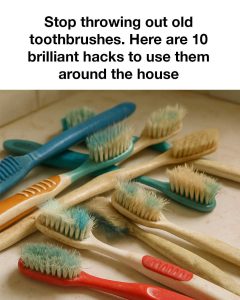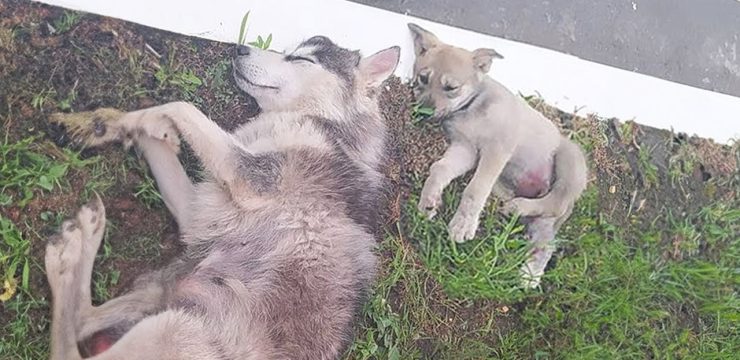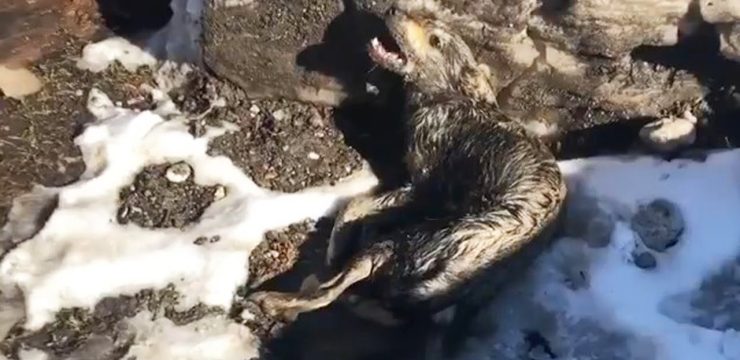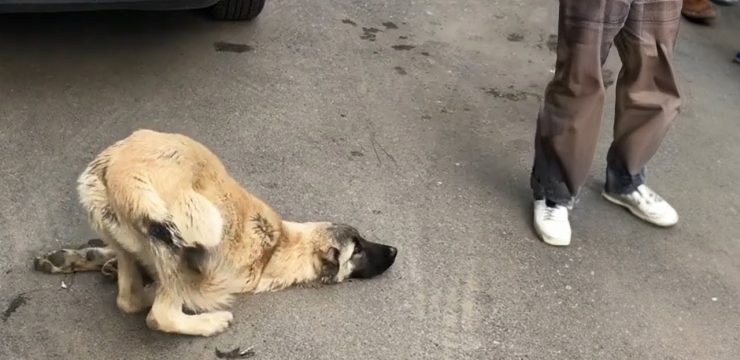In today’s world, where sustainability and minimizing waste are more important than ever, giving everyday objects a second life can make a big difference. One such item is the old toothbrush. Often thrown away without a second thought, it actually holds a lot of hidden potential. Thanks to its small head, firm bristles, and ergonomic handle, an old toothbrush can be repurposed for a wide range of cleaning and detailing tasks around the home. Not only does this practice reduce waste, but it also saves money and makes your daily chores a little easier. By reusing something as simple as a toothbrush, you’re taking a small but meaningful step toward a more eco-friendly lifestyle.

Why should you give your old toothbrush a second chance? First, consider its composition. Most toothbrushes are made from plastic, which doesn’t decompose easily—often taking hundreds of years to break down in a landfill. That alone is a good reason to keep them out of the trash if they still have some utility. Second, old toothbrushes can replace specialty cleaning tools that you might otherwise buy, helping you reduce both waste and spending. Lastly, repurposing is just smart—it’s an easy way to stretch the usefulness of what you already have.
Before you get started, it’s essential to clean your old toothbrush properly. Begin by rinsing it under hot water to remove any leftover toothpaste. Then soak it in a solution made from equal parts white vinegar and water for about 30 minutes. This helps to disinfect and deodorize the brush. After soaking, rinse it again with hot water and let it air dry completely. Now, it’s ready to take on a variety of new roles around your home.
One of the best uses for an old toothbrush is as a grout cleaner. Grout lines between your tiles can collect grime and are often tough to scrub. But a toothbrush fits perfectly into those narrow spaces, and its firm bristles do a great job lifting dirt. Make a paste using baking soda and water, apply it to the grout, and scrub in a circular motion. Rinse with water afterward to reveal refreshed, clean tiles.
Jewelry is another area where a toothbrush can come in handy. Over time, rings, bracelets, and necklaces can lose their sparkle, especially in hard-to-reach crevices. Mix a few drops of mild dish soap with warm water, dip the toothbrush in, and gently scrub your jewelry. Focus on the detailed settings and corners. Rinse thoroughly with clean water and dry with a soft cloth to bring back the shine.
Your electronics can benefit, too. Keyboards, in particular, collect crumbs, dust, and oil from your fingers. Turn off the device, then use a dry toothbrush to sweep between the keys. For a deeper clean, dip the bristles in isopropyl alcohol and scrub gently. This removes buildup and helps sanitize your keyboard without damaging it.
When it comes to shoes—especially sneakers or boots with textured soles—an old toothbrush can scrub away dirt that builds up in the grooves. If necessary, use a dab of dish soap or a baking soda paste for stubborn spots. Rinse and let your footwear air dry. You’ll be amazed at how much cleaner they look with just a little effort.
Hairbrushes can get gunky fast with a mix of hair, oil, and product residue. Once you remove the loose hair by hand, use your old toothbrush to clean between the bristles. A little shampoo or soap in warm water helps break down buildup. Scrub gently, rinse well, and let the hairbrush dry completely.
Another area where toothbrushes shine is in polishing bathroom fixtures. Faucets and sink edges often develop water spots or soap scum. Apply baking soda or a gentle cleaning product to the toothbrush and scrub around the base, in the grooves, and wherever grime collects. Rinse and polish with a soft cloth for a like-new finish.
Artists and hobbyists can benefit too. If you have paintbrushes with dried paint, a toothbrush can help restore them. Use it to scrub the bristles gently or clean up dried paint on palettes and trays. This keeps your art supplies in better shape and extends their usefulness.
Surprisingly, an old toothbrush also works well in the kitchen—specifically for scrubbing vegetables. Firm produce like potatoes and carrots often have dirt stuck to the skin. Use the toothbrush under running water to scrub away any grime or pesticide residue, making your produce cleaner and safer to eat.
Pet owners will appreciate how handy a toothbrush can be for grooming. It’s especially useful for small areas like around a pet’s eyes, ears, or paws where larger brushes might be too rough. The soft bristles help remove loose fur and dirt without irritating your pet’s skin. It’s a gentle way to keep your furry friend clean and comfortable.
If you’re into crafts, keep an old toothbrush in your toolkit. It’s perfect for applying glue in tight spots, creating unique textures in paint, or cleaning up small messes. Its precision and ease of use make it a go-to tool for any detailed project.
In conclusion, old toothbrushes prove that even the simplest items can have second lives with a bit of creativity. Instead of tossing them in the trash, think about how they could serve another purpose in your daily routine. Whether you’re scrubbing grout, cleaning your favorite jewelry, refreshing art tools, or grooming your pet, these little brushes are surprisingly mighty. Embracing the reuse of old toothbrushes not only helps reduce waste but also makes life around the house easier and more efficient. So next time you’re ready to throw one away, pause and ask yourself: what else could this little tool do?





